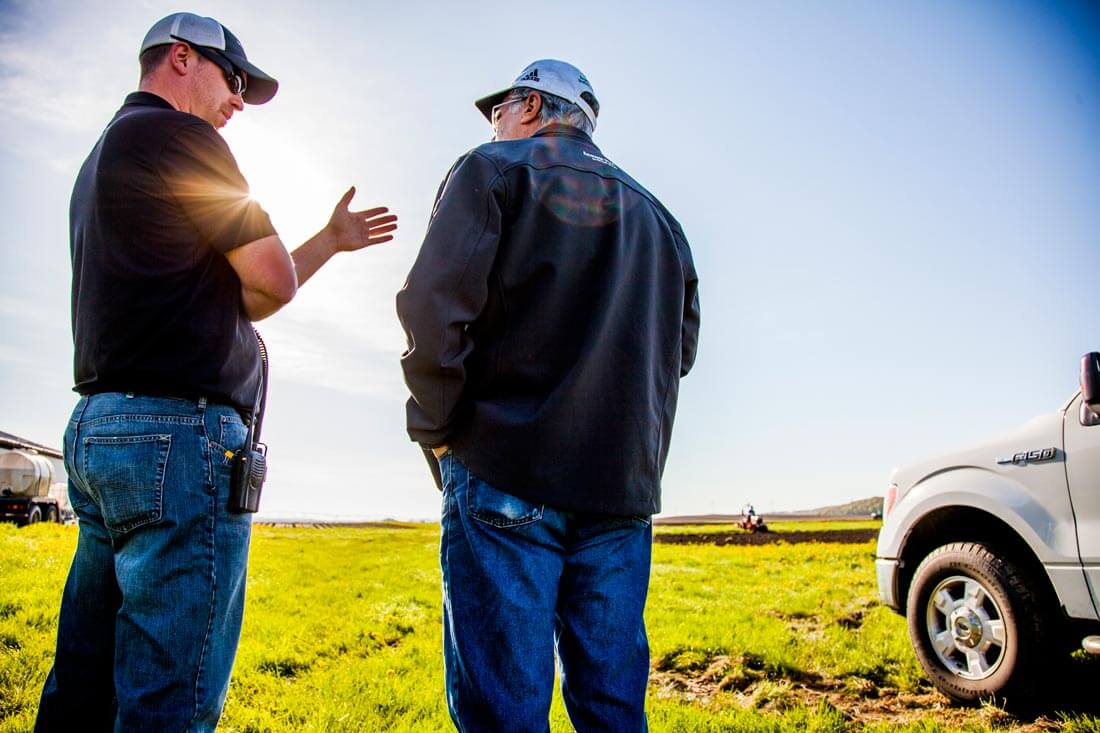Doing Your Own On-Farm Trials

Have you ever conducted field trials on your farm? Last year, a number of farmers in my area of west-central Minnesota tested various products on their acres. Here is a brief snapshot of what those trials uncovered and some tips for doing your own.
In-season management works.
In 2015, growers who did in-season management — pushed extra nitrogen at the right time, applied fungicides, used foliar feeding — picked up more bushels. Of course, weather is always a variable. But if you feed plants what they want, they’re going to respond.
High-intensity management worked for corn.
Both Answer Plot® and on-farm trials showed that corn “racehorse” hybrids with strong response to nitrogen (RTN) scores did very well with high-intensity management. Some farmers in my area averaged 200 bushels per acre with corn, with some reaching 240-bushel farm averages by using precision ag tools like the Top 10 from the R7® Tool to place the right seed on the right ground or by increasing populations. When they concentrated on areas that showed the most promise and didn’t leave anything to chance, yield really came through.
Tips for your on-farm trials
For farmers who want to complement broader trials with data gleaned specifically from their fields, it’s important to keep a few things in mind.
In-season management works.
In 2015, growers who did in-season management — pushed extra nitrogen at the right time, applied fungicides, used foliar feeding — picked up more bushels. Of course, weather is always a variable. But if you feed plants what they want, they’re going to respond.
High-intensity management worked for corn.
Both Answer Plot® and on-farm trials showed that corn “racehorse” hybrids with strong response to nitrogen (RTN) scores did very well with high-intensity management. Some farmers in my area averaged 200 bushels per acre with corn, with some reaching 240-bushel farm averages by using precision ag tools like the Top 10 from the R7® Tool to place the right seed on the right ground or by increasing populations. When they concentrated on areas that showed the most promise and didn’t leave anything to chance, yield really came through.
Tips for your on-farm trials
For farmers who want to complement broader trials with data gleaned specifically from their fields, it’s important to keep a few things in mind.
- Keep things simple. Test one thing at a time: one hybrid versus another hybrid, high management versus low management. Limit the trial to the most important information you want to find out.
- Understand there will be variability. Something I can almost guarantee is that you’ll have more variables than you expect. Understand that weather will affect your outcomes, as will fertility. Because of factors you can’t control, the size of your trial might diminish and, as a result, it may not be a true test of what you’re farming. If you didn’t get the outcome you expected, you should determine why. This is where a trusted agronomic advisor can help.
- Work with your local agronomist. Chances are he or she has done the same trial or knows someone who has, and can point you in the right direction. Stick to the program, but understand that you need to adapt if conditions change. Your agronomist can help you navigate the issues.
- Engage your other stakeholders. Review your plans not only with your agronomist, but also with the managers and applicators you work with. Open communication will help ensure everyone understands what you want to accomplish and what their roles are in helping make that happen.


